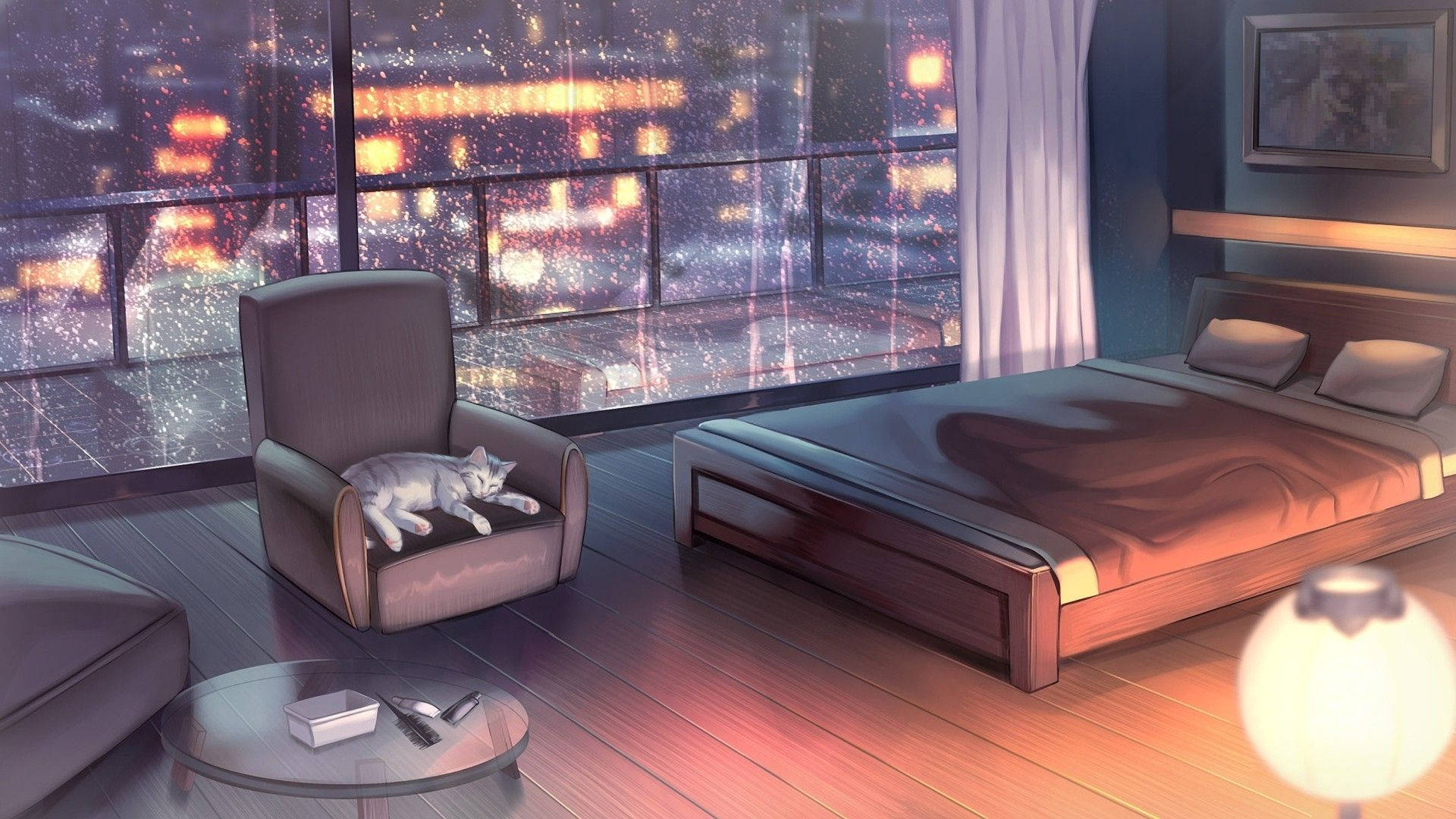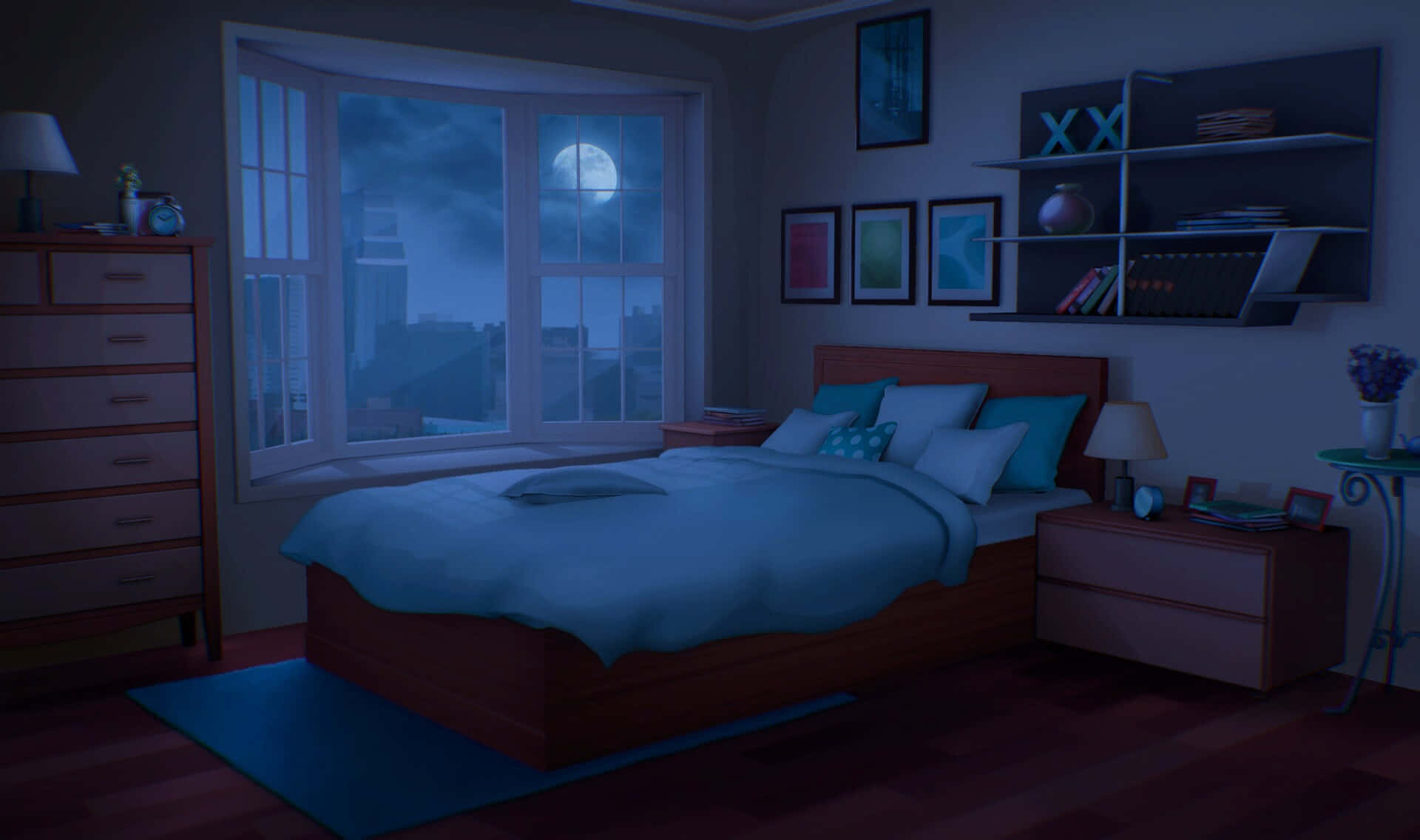Exploring the Visual Aesthetics of Dark Anime Bedrooms

The dark anime bedroom, a space of introspection and hidden depths, is a canvas for a unique visual language. The creators of these settings meticulously weave together color palettes, lighting techniques, and furniture choices to craft an atmosphere that resonates with the characters’ inner turmoil and the narrative’s overarching themes.
Color Palettes
The color palettes in dark anime bedrooms often evoke a sense of mystery and melancholy. They typically feature a dominant use of dark shades, with splashes of lighter colors used strategically to create contrast and highlight specific elements.
- Black: Black is the most prevalent color, symbolizing darkness, isolation, and the unknown. It can represent the characters’ inner struggles, their fear of the future, or their desire to hide from the world.
- Dark Blue: Dark blue often conveys a sense of sadness, loneliness, and the vastness of the unknown. It can symbolize the weight of the characters’ past or their feelings of being lost and alone.
- Purple: Purple is associated with royalty, mystery, and the supernatural. It can represent the characters’ hidden powers, their connection to the supernatural, or their desire for control.
- Red: Red is a powerful color that can symbolize passion, anger, and danger. In dark anime bedrooms, it can be used sparingly to highlight specific objects or create a sense of tension.
- White: White is often used as a contrasting color, representing purity, innocence, and hope. It can be used to highlight specific objects or to create a sense of contrast with the darkness.
Lighting Techniques
Lighting plays a crucial role in shaping the mood and atmosphere of dark anime bedrooms. The use of shadows, contrasts, and light sources creates a sense of depth and mystery.
- Shadows: Shadows are often used to create a sense of mystery and intrigue. They can obscure details, leaving the viewer to wonder what is hidden in the darkness.
- Contrasts: The use of contrast between light and dark areas can create a sense of drama and emphasize specific elements. This technique is often used to highlight objects, characters, or important details.
- Light Sources: The choice of light sources can significantly impact the mood of the scene. Dimly lit rooms with soft lighting can create a sense of intimacy and melancholy, while harsh, artificial lighting can create a sense of unease or tension.
Furniture and Decor
The furniture and decor choices in dark anime bedrooms often reflect the characters’ personalities and their emotional states. Specific objects can carry symbolic meaning, adding depth and complexity to the overall narrative.
- Minimalist Furniture: Dark anime bedrooms often feature minimalist furniture, reflecting the characters’ sense of isolation or their desire for simplicity. This can also create a sense of emptiness and loneliness.
- Dark-Colored Furniture: Dark-colored furniture blends seamlessly with the overall color palette, creating a cohesive and unified atmosphere. It can also emphasize the characters’ desire to disappear or to blend into the darkness.
- Symbolic Objects: Objects like books, photographs, or musical instruments can carry symbolic meaning. They can represent the characters’ hobbies, their past experiences, or their hopes and dreams.
Thematic Significance of Dark Anime Bedrooms: Dark Bedroom Background Anime

Dark anime bedrooms, often shrouded in shadows and imbued with a sense of solitude, transcend mere physical spaces to become potent symbols within the narrative landscape. These rooms, far from being mere backdrops, are meticulously crafted to reflect the inner turmoil, aspirations, and secrets of the characters who inhabit them.
The Weight of Isolation
The pervasiveness of isolation within dark anime bedrooms is a recurring theme, serving as a visual manifestation of the character’s emotional detachment or social withdrawal. The stark contrast between the bright, bustling world outside and the character’s dimly lit sanctuary underscores their yearning for escape or their struggle to reconcile with their internal struggles.
- In “Neon Genesis Evangelion,” Shinji Ikari’s room, dominated by a stark white bed and a towering window overlooking a desolate cityscape, becomes a tangible representation of his alienation and emotional turmoil. The room’s cold, minimalist aesthetic mirrors his internal struggle to connect with others and find meaning in a world that feels increasingly hostile.
- In “Death Note,” Light Yagami’s room, initially a haven for his intellectual pursuits, gradually transforms into a prison of his own making as his obsession with the Death Note consumes him. The room’s cluttered appearance, with piles of books and scattered papers, reflects his mental descent into darkness and the weight of his increasingly morally ambiguous actions.
Introspection and Self-Discovery
Dark anime bedrooms often serve as a crucible for introspection, where characters confront their deepest fears, desires, and vulnerabilities. The darkness, while initially intimidating, provides a sense of privacy and security, allowing characters to shed their outward personas and engage in introspective dialogues with themselves.
- In “Fullmetal Alchemist: Brotherhood,” Edward Elric’s room, characterized by its sparse furnishings and a large window overlooking the bustling city, becomes a space for him to grapple with the consequences of his past actions and the weight of his responsibilities. The room’s quietude provides him with the necessary space to confront his inner demons and ultimately find redemption.
- In “Psycho-Pass,” Shinya Kogami’s room, decorated with minimalist furniture and a single, flickering light, becomes a place for him to reflect on the nature of justice and the blurred lines between good and evil. The room’s starkness mirrors his own internal conflict between his desire for order and his recognition of the complexities of human nature.
The Mystery of the Unseen
The darkness that envelops these bedrooms often serves as a metaphor for the mysteries that lie hidden within the characters themselves. The shadows, both literal and metaphorical, conceal secrets, desires, and traumas that may be slowly revealed throughout the narrative.
- In “Monster,” Johan Liebert’s room, perpetually shrouded in darkness and adorned with cryptic symbols, becomes a visual manifestation of his enigmatic nature. The room’s atmosphere of intrigue and secrecy reinforces his persona as a manipulator and a master of deception, leaving viewers to speculate about his true motives and the extent of his power.
- In “The Promised Neverland,” Emma’s room, initially appearing as a simple dormitory, becomes a space for her to unravel the sinister truth behind her seemingly idyllic life. The room’s seemingly mundane details, such as the hidden door and the unusual layout, become clues that lead her to discover the horrifying reality of her existence.
The Power of Transformation, Dark bedroom background anime
Dark anime bedrooms often serve as a catalyst for character transformation. The darkness, initially a symbol of stagnation or despair, can also represent a space for growth and self-discovery. Characters who confront their inner demons within these rooms often emerge stronger, more resilient, and with a newfound understanding of themselves.
- In “Attack on Titan,” Eren Yeager’s room, a testament to his childhood dreams and aspirations, becomes a symbol of his journey from a naive boy to a hardened soldier. The room’s transformation, reflecting Eren’s evolving sense of purpose and his willingness to embrace the darkness within himself, mirrors his growth as a character.
- In “Code Geass,” Lelouch Lamperouge’s room, initially a space for his intellectual pursuits, becomes a symbol of his transformation into a ruthless revolutionary. The room’s gradual shift from a space of contemplation to one of power and strategy reflects his embrace of his role as a leader and his willingness to use any means necessary to achieve his goals.
